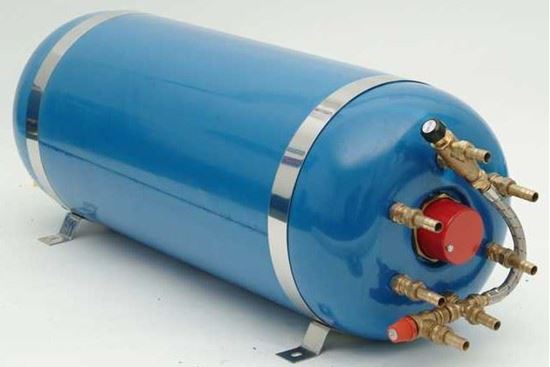I have a Webasto Thermotop C in our OKA motorhome that has one significant difference from the systems described here.
The calorifier has 2 separate heat exchange circuits. One is used by the Webasto and the central heating radiators and the other is used by the engine circuit.
SureCal boilers are made of the finest quality materials, which guaranteeing the ultimate performance and reliability. In addition the drop coil technology and finned surface heat exchanger used in the boiler provides unrivaled heat recovery. The units also come in twin coil version for use with...
www.surejust.co.uk
Both circuits have auxiliary circulation pumps in the lines which can be manually switched.
If I heat the calorifier water with the Webasto and run the engine circuit auxiliary pump, then the engine gets heated.
When driving, the engine glycol circulates through the calorifier by default and we have 22L of hot (85C) water within 30 minutes.
If when driving I also run the Webasto circuit auxiliary pump then the central heating can operate (without running the Webasto).
The calorifier also has a 1000W immersion heater that we can power via an inverter from solar power/batteries when camped up. I deliberately kept it small so as not to use up all the available solar.
There are no pre heaters and the glycol buffer tank is about 2L with no overflow on the Webasto circuit and I do not circulate the glycol through it. It simply catches any air bubbles. The level only varies a tiny bit from one extreme to the other and from one month to the next.
There is nothing else on the engine circuit except the engine and its normal bits.
There is an expansion tank on the hot water line.
The other useful feature is we have 2 independent central heating radiator/fan units, one of which heats the bathroom (it gets its "cold" air from the living area and blows it into the bathroom) and with the door closed and the window open a tad it operates as a VERY effective cloths drying room without heating the rest of the living space.
Yes kerosene works fine. I usually add 10% to the diesel to increase its cold weather performance to stop gelling.
Cheers,
Peter
OKA196 motorhome

